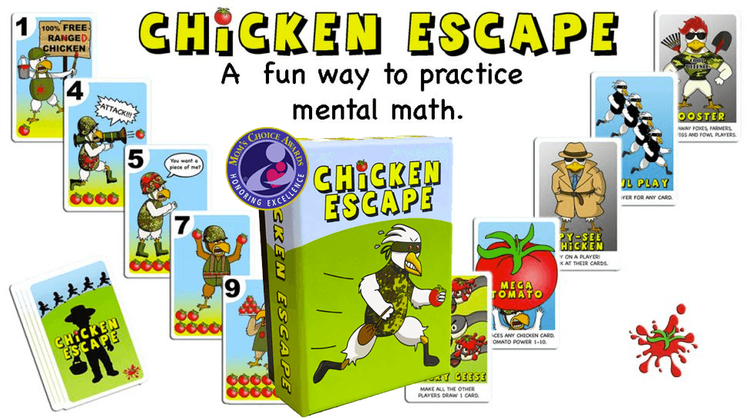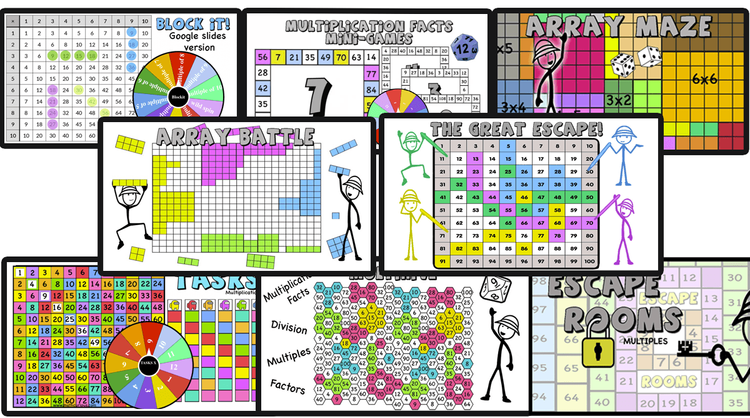Teachers and parents can turn mental math strategies into games by adding a time limit or a competitive element. Play is a powerful learning tool and practicing a strategy with a game makes math more interactive and fun. The following are some examples of activities you can do with students to practice mental math strategies.
- If for example, you have taught the strategy of adding and subtracting 9, you can give a number of this type of problems to an individual student or groups and ask them to solve as many as they can in two minutes.
- If you have taught the strategy of multiplying and dividing by 10 you can create a memory game, a matching game, or a card game for students to practice this strategy.
- Give students a number and ask them to find as many ways as they can to make that number using addition, subtraction, multiplication, or division. This game is good for all skill levels and can become a good challenge even for advanced math learners. It is a good game to start the day or fill time gaps between transitions. The students can work in pairs or individually.
- Give the students a number which will be a “special number” ( write it on the board) and then ask them different equations to solve in their mind. If the answer is more than the “special number” they need to stand up. If it’s less they sit down. This can get a bit crazy but it is a fun game that allows children to move their bodies and mentally solve problems. You can always change the rules. For example, the children keep their elbows on the desk, join their arms and open their palms in a V shape if their number ( the one they get after solving the equation) is smaller and keep their elbows apart and join their hands if their number is bigger (upside-down V pointing at the board). This is a good trick to use while comparing numbers as well.
- Give students problems for which they need to try and test different numbers (trial and error). For example: Find the two mystery numbers that give a sum of 16 and have a difference of 2. Find 3 mystery numbers that when multiplied give a product of 24 and when added a sum of 9. Students need to try different combinations and test them. Children tend to find this kind of problem very satisfying to solve. Moreover, problems of this sort offer opportunities for pair or group work with some friendly competition.
- Challenge your students/children with some mental calculations by giving them a number to start with and then asking them to perform different operations and see if they can reach the correct answer. For example,
Start with the number 12
Add 20
Subtract 4
Multiply by 5
The children are encouraged to do the calculations mentally, remember the answers every time and only write the last one, and so on. However this might prove to be very hard for some students, so they can write the new answer down every time but do the calculations mentally. You can start slow, with smaller numbers, giving them more time to do the calculations and gradually make it more challenging. This activity can be done individually with the students following written instructions.
- Mental math BINGO. Give the students (group or individual) a bingo card with specific numbers. ( You can use a bingo-card generator). Every time you tell an equation and they have to find the answer on their bingo card.
For example: if you are practicing adding 9
37 +9= look for 46
64 +9=look for 73
If you are practicing the table of 5
6 x 5=30 look for 30
12 x5=60 look for 60
- The students make their own bingo cards by writing numbers of their choice 1-50. Then the teacher or a student asks.
Do you have a multiple of 5? A number with 2 at the tens digit? A number with the same digit for tens and ones? etc. The students color the numbers on their card if they have them and the first to color a line wins. Check out this easy bingo game.
- If you are practicing multiplication facts to help students gain automaticity, play many games on the multiplication table or give students the answer of one fact and ask them to find the answer to another. This will help them make connections and use the facts they know well as steps. For example, if 10×6=60 then 5×6=? This is a good game to begin practicing all the multiplication facts when students are ready. Block it!
Games are a perfect way to practice mental math strategies in a fun and engaging way. However, in the class, you need to be careful with the level of difficulty and make sure the activity can be done and understood by all the students. Many times it helps if students work in pairs or groups. At home keep the games short and fun. For example, you can play a mental math game in the car or while waiting for an appointment.
Find many free games here google slides version and web games included








